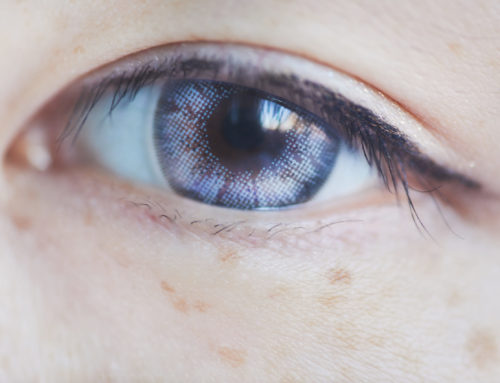If you are a regular user of contact lenses, it may be time to consider eliminating them from your daily routine altogether.
Contact Lenses & Pollution
According to researchers at Arizona State University, not only are contact lenses a significant source of microplastic pollution but there is no standard nor sustainable way of disposing of them [1]. They end up polluting the water systems, contaminating our soil, and impacting our animal ecosystems. Read on to find out five reasons why you should reduce or eliminate your use of contact lenses.
Reason One: They Take Forever to Break Down
One of the first things that the ASU research team looked at was the time it takes for contact lenses to break down when placed into wastewater treatment tanks. Despite these tanks being filled with hungry microorganisms, it took the lenses over 172-hours just to begin breaking down. The degradation was only slight at the 172-hour mark. This means that contact lenses take forever to break down when compared with other common plastic pollutants found in wastewater treatment tanks.
Reason Two: It Is Estimated That 28,000 Pounds Contaminate Our Soil Every Year
If the contact lenses are not broken down and filtered at the wastewater treatment plants, they likely end up being hidden in the sewage sludge [2], which is a byproduct of wastewater treatment. According to the study, approximately 50,000 pounds may accumulate in sewage sludge per year. Since 55% of waste is dumped into soil [3], researchers believe that about 28,000 pounds of contact lens fragments end up in our soil every year. This doesn’t account for how much flows down into our riverbeds and oceans.
Reason Three: 2.5 Billion End Up in Our Sewage Per Year
The Center for Disease Control and Prevention notes that 45 million Americans wear contact lenses [4]. This data, combined with data from major lens manufacturers, puts about 13-14 billion contact lenses into circulation per year. If 21% or 1 in 5 individuals flush theirs lenses down the sink, this leads to about 2.5 billion lenses being put into our sewage each year. This leads us to our fourth & fifth reasons; how contact lenses impact our food chain and ecosystems.
Reason Four: They Get Consumed By Aquatic Wildlife & Mammals
If our sewage is laden with contact lens fragments and these are dumped into our soil, not only can they wash away into rivers and oceans where aquatic wildlife like fish, seabirds, seals, sea turtles, and plankton consume the microplastic, but land mammals also come into contact with the plastic pollution. If contact lenses sit in the soil, they dry out, become brittle and shatter into small particles. These microplastics are then consumed by birds, insects, and other animals, allowing plastic pollution to make its way into our food chain.
Beyond this, as filter feeders, small fish, and small animals consume the microplastics, their bodily functions can become harmed. Not only can this kill them off, leading to lower population numbers, but if these animals are not eating because they already feel full, they may starve. This directly harms and imbalances the food chain order and has a drastic and negative impact on Earth’s ecosystems.
Reason Five: Their Impact May Be Higher Than Other Microplastics
Contact lenses are more likely to absorb toxins in the environment, such as pesticides or herbicides, because they are designed to absorb liquid. This can place much higher concentrations of chemicals into the food chain.
What Can You Do?
Reduce or eliminate your use of contact lenses altogether. If you cannot completely stop your use, consider using a brand that has a recycling program in place.
If you are ready to take the first step to better vision, call us at 407-843-5665 to schedule a laser vision correction appointment.
Magruder Laser Vision — Correcting Eyes. Changing Lives.



